OP-ED
Veld circles are creating custodians of Cape Town’s biodiversity
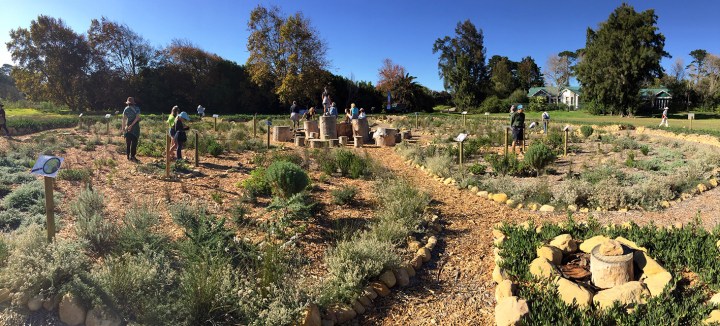
Dr Caitlin von Witt’s message is clear: ‘If you want to support the most biodiversity, you should support local biodiversity.’ Through the FundaFynbos project, she is educating Capetonians about indigenous plants and encouraging them to plant them at home.
Cape Town has been named the biodiversity capital of the world, but sadly also the extinction capital of the world. Of the city’s 19 veld types, six are found only in Cape Town. Dr Caitlin von Witt says this unique diversity is partly the result of the varying climate, topography and soils.

Gardeners monitor one of the fynbos circles. (Photo: Caitlin von Witt)
In partnership with the City of Cape Town, FynbosLIFE has created two veld circles so far as part of the FundaFynbos project to showcase two of Cape Town’s endemic and endangered veld types: Peninsula Granite Fynbos and Cape Flats Dune Strandveld.
The 1,000m2 Fynbos Circle is on the Grootboschkloof green belt in Constantia and the 1,000m2 Strandveld Circle is on the edge of Zandvlei in Muizenberg. Von Witt says they “have been planted to show what can be done” and have been made “accessible and fun”. They “are intended to bring us back to nature by creating immersive experiences for people who wouldn’t usually visit nature reserves or don’t have their own indigenous gardens”.
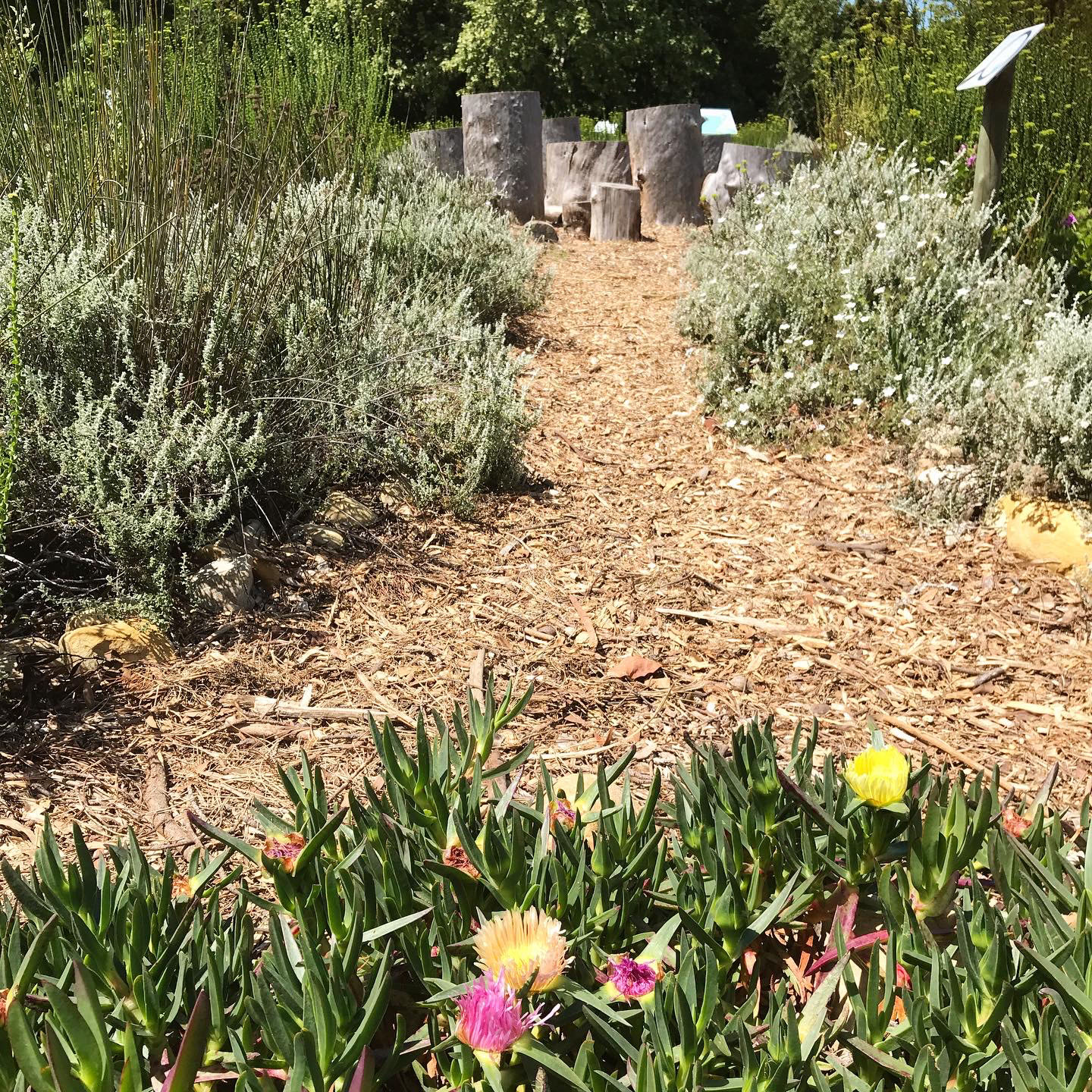
Grootboschkloof Fynbos Circle in spring. (Photo: Caitlin von Witt)
According to Von Witt, Cape Town is the hot zone of the Cape Floristic Region biodiversity hotspot. “We have really got something special here, and we should all feel responsible for it.”
For her, “everything started at home” where she found her connection with nature as a child planting a garden.
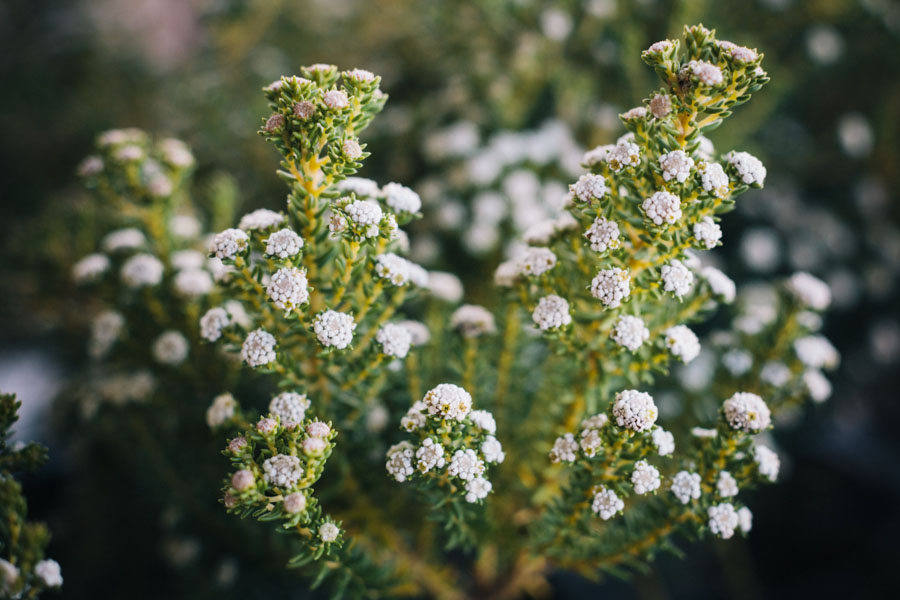
Phylica ericoides at the Grootboschkloof Fynbos Circle. (Photo: James Puttick)
Custodianship “can start in Cape Town’s backyards, and if we plant locally indigenous plants in our gardens, we automatically create a space where we can learn to understand nature and the interactions between plants and animals”.
This is important because “you are more likely to love and conserve nature if you understand it”.
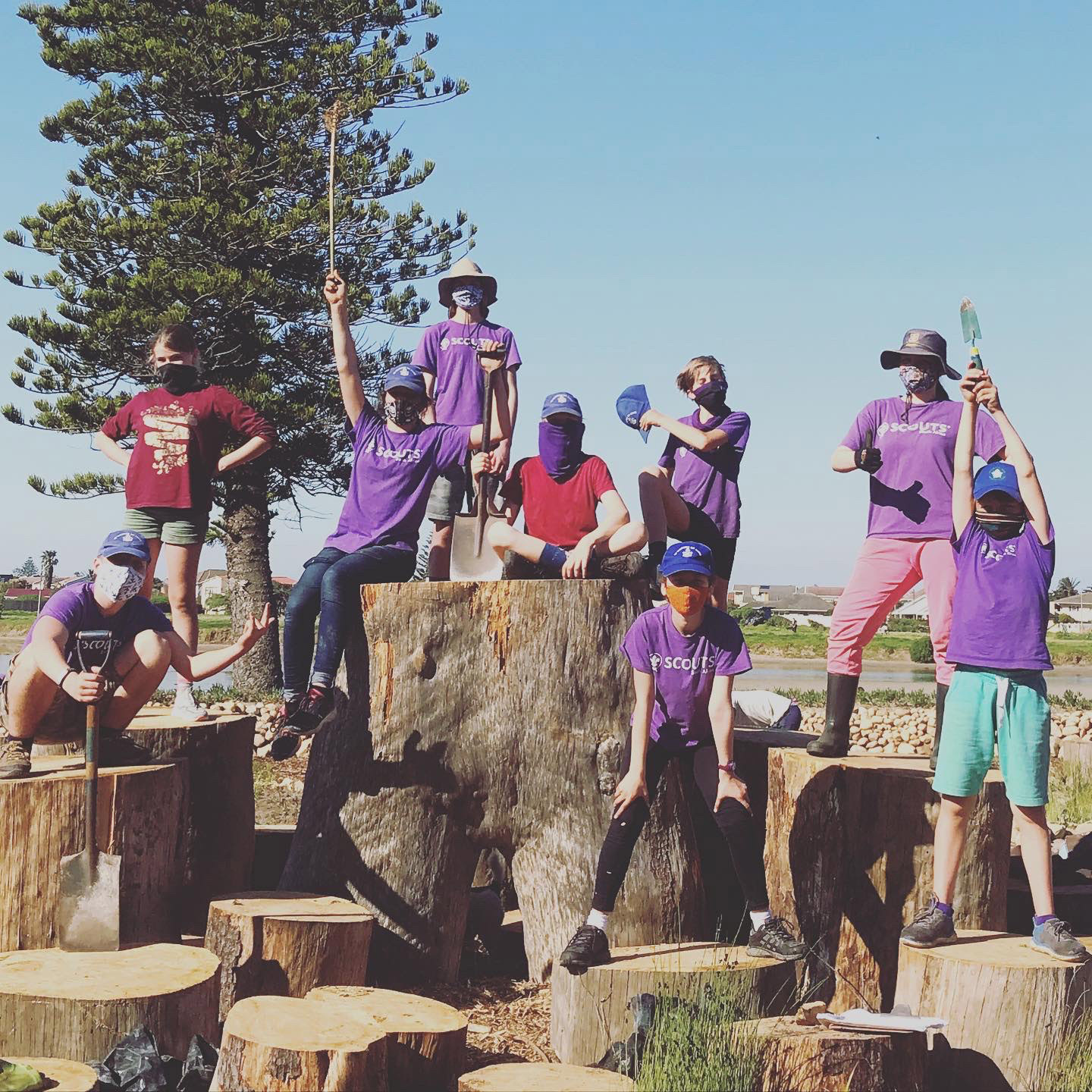
First Muizenberg Sea Scouts hel plant the Strandveld Circle on the edge of Zandvlei in Muizenberg. (Photo: Caitlin von Witt)
Von Witt says her friends’ mindset around fynbos plants have changed a lot as they have learnt about them.
“If you don’t understand anything about something, you’d rather just keep your distance than feel ignorant or overwhelmed. Once people know just one thing and have read just one thing that is interesting, then they can share that with somebody else, and they become a teacher themselves.
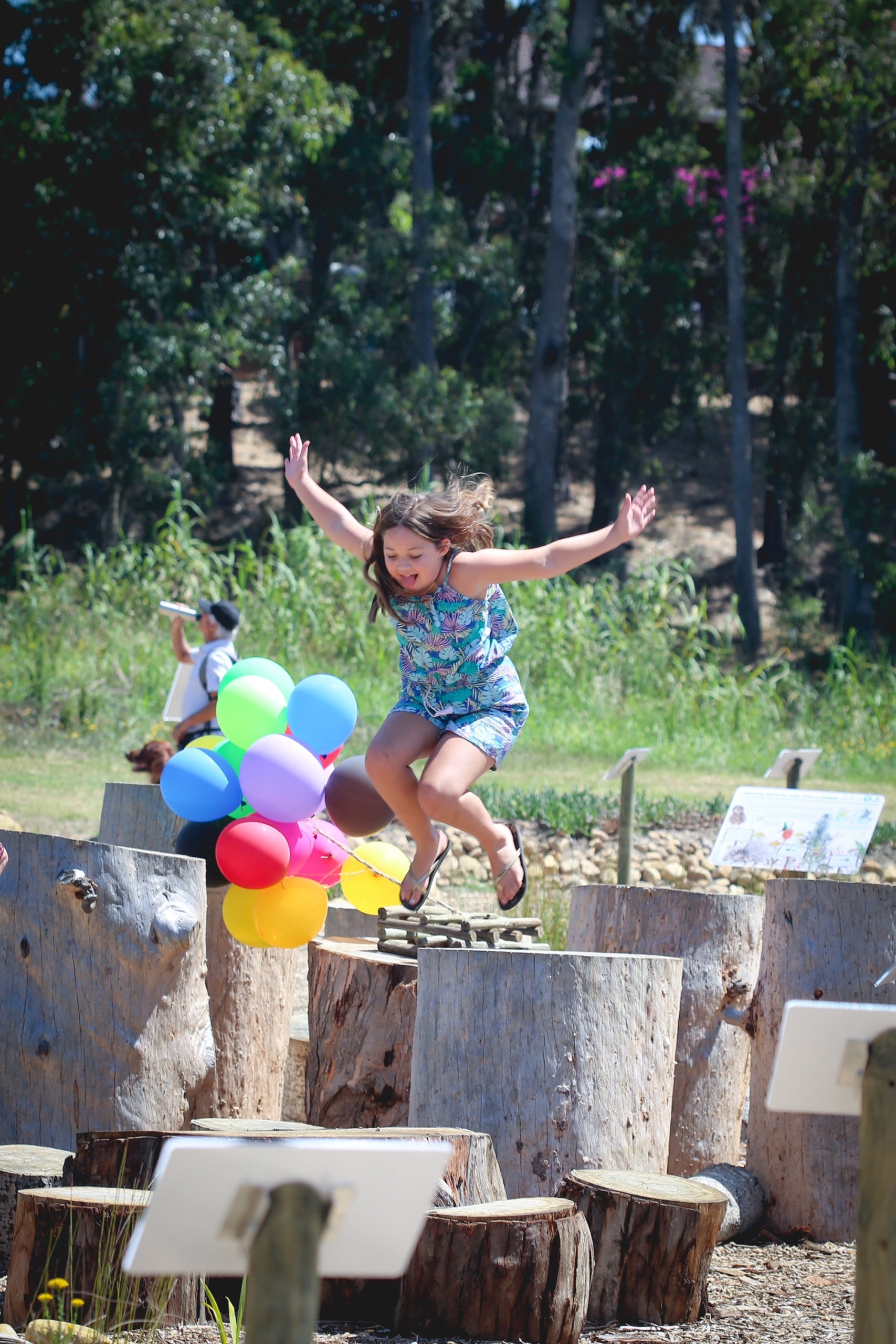
A child plays at the Grootboschkloof Fynbos Circle. (Photo: Susie Harris-Leblond)
“Locally indigenous plants are amazing educational tools. If people plant them in their gardens they are creating educational spaces for their families, and their children will hopefully tell their friends and the word will spread. In that way, we can create biodiversity passageways through gardens.”
The shapes of the veld circles are based on flowers found in them. For example, the Strandveld Circle, which is funded by the Mapula Trust and Zandvlei Trust, is in the shape of the flower of the edible veldkool (Trachyandra ciliata), which was rescued and replanted and “is divine when cooked with olive oil, garlic and chilli”.
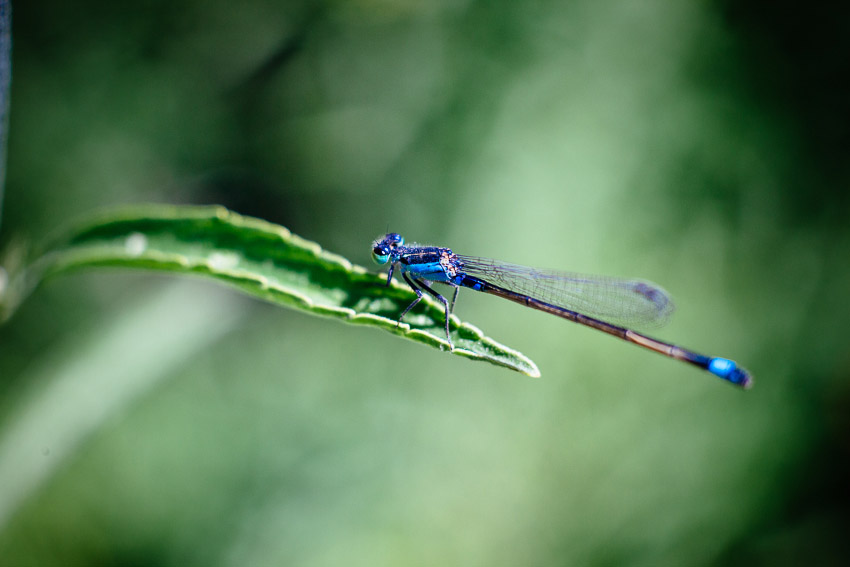
A damselfly visits wild dagga, Leonotis Leonurus, at the Fynbos Centre. (Photo: James Puttick)
The plants in the circles are locally sourced. For example, the Strandveld Circle’s plants were propagated by the Cape Flats Fynbos Nursery from cuttings and seeds collected from the Zandvlei Nature Reserve, with about 95% of the species found within 1km of the site.
There are signs up at the veld circles “so visitors can learn about the plants and take the information home and hopefully create their own gardens using similar species”. Many of the plants are edible or have medicinal properties and Von Witt has seen them used by visitors, including children sucking on soursucks (Oxalis pes-caprae) at the Strandveld Circle. At the Fynbos Circle tea was made from wild mint, rose geranium and rosemary when picnic tea bags had been forgotten, while a mother applied sour fig sap – a soothing astringent – to a cut on her little girl’s hand. “The plants being edible is a tangible element of learning. You don’t forget something if you eat it.”
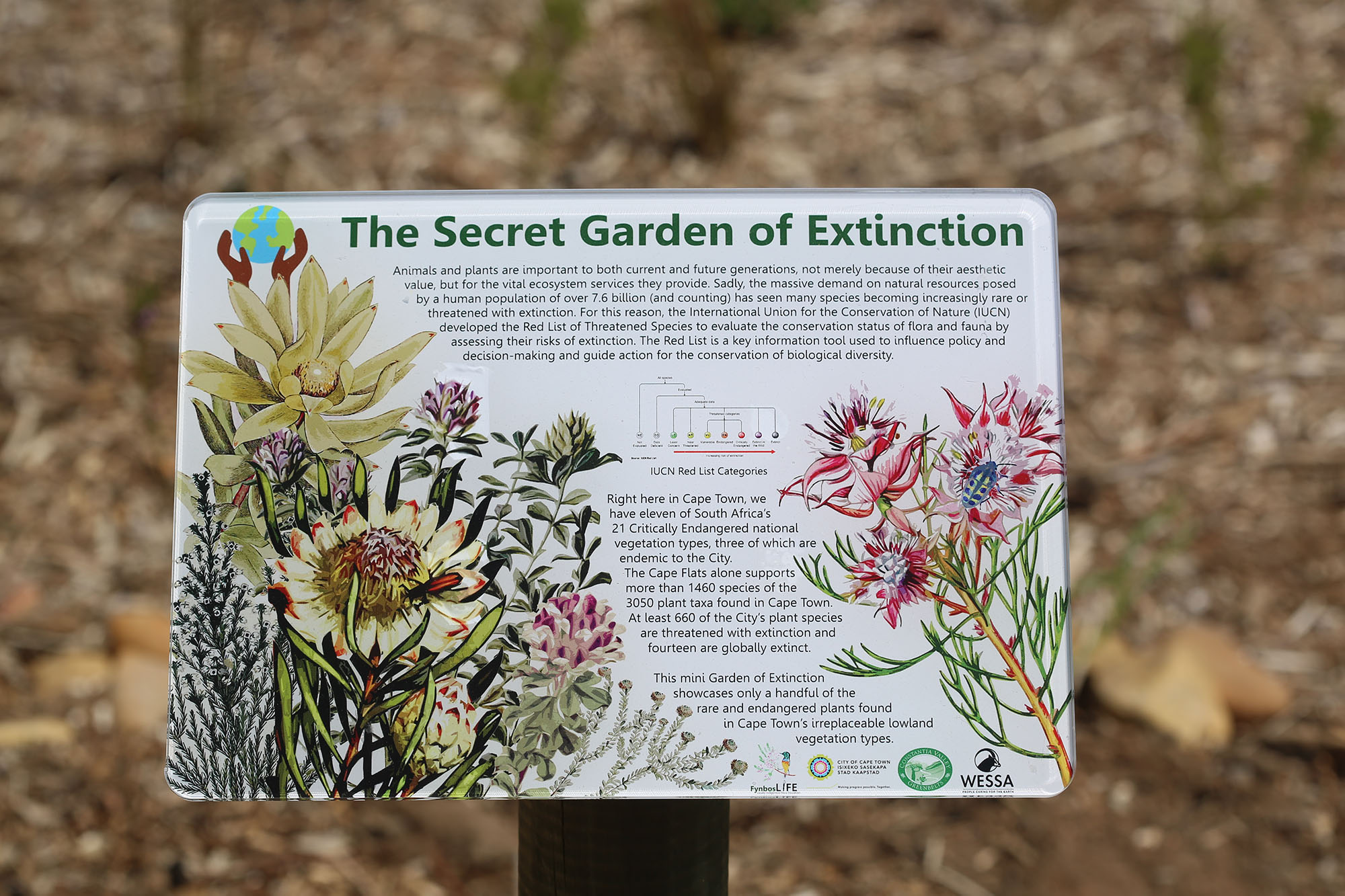
The garden offers education by way of signage about extinction. (Photo: Susie Harris-Leblond)
“The information-heavy signs also mean the veld circles can be used as an outdoor classroom by teachers.”
But having fun is important, too, she says.
With education and recreation, the third pillar of the project is restoration. The veld circles provide biodiversity stepping stones – “areas that enable wildlife to move between nature reserves or create some connectivity between them by providing food, temporary shelter, a permanent home, or somewhere to interbreed”.
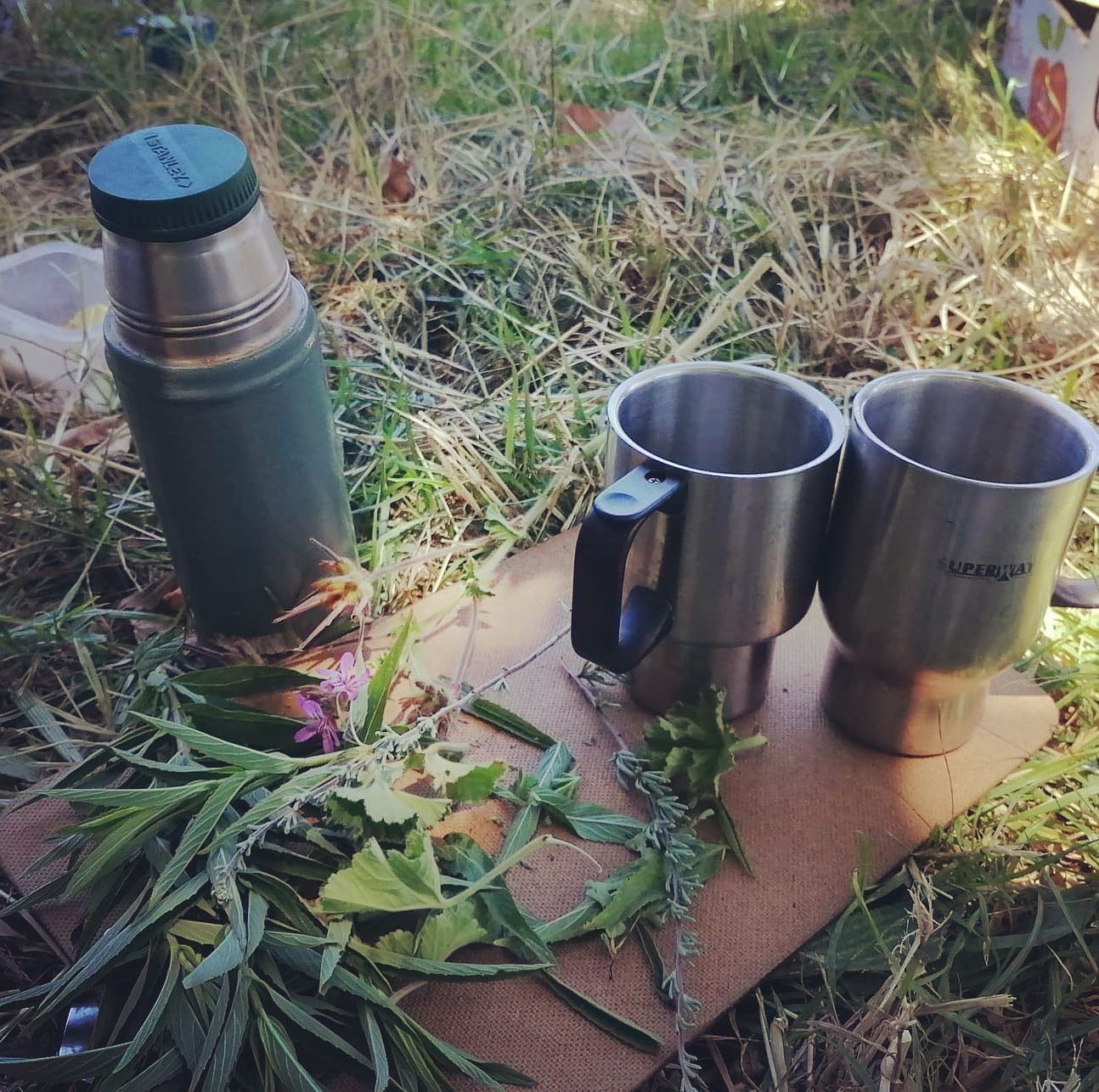
Wild mint, rose geranium and wild rosemary tea at the Grootboschkloof Fynbos Circle. (Photo: Marianne Alexander)
Ultimately, the goal is to encourage residents to plant these species, which are available from the Cape Flats Fynbos Nursery, in their gardens. The project shows that “with the appropriate groundwork anyone can plant Peninsula Granite Fynbos in heavy clay soil in Constantia, or Cape Flats Dune Strandveld in their sandy gardens in Muizenberg, with no need for compost or watering, if planting is done with the winter rains, and this will support water conservation and wildlife conservation”.
“Neither of the veld circles has ever been watered”, says Von Witt. “They survive on rainfall, condensation and groundwater.”

Grootboschkloof Fynbos Circle. (Photo: Greenfly Aviation)
She says that “some fynbos rehabilitation is possible, wildlife does return, and we need to keep showing others the wonder of these plants”.
Visitors to the Fynbos Circle have learnt the difference between lowland and mountain fynbos, which is important because “plants that grow on the mountain are locally adapted” and “people will often go to the nursery and buy mountain fynbos because they want their garden to look like the mountain but it’s never going to. For a start, we don’t have the amount of water in the lowlands that you get on the mountain.”
The Strandveld Circle will also be used to build awareness of two butterflies: the critically endangered False Bay Unique Ranger (Kedestes lenis lenis) and Barber’s Cape Flats Ranger (Kedestes barberae bunta), which is only found at one site in the False Bay Nature Reserve. The population is estimated at only 50 owing to habitat loss. The butterflies probably occurred historically at the circle, which has been planted with their habitat.
Not only do the veld circles provide habitat for wildlife and a fun place for children, they are meeting places. A staff member at a security company close to the Fynbos Circle has said it has made the area more attractive, friendly and safe.
In explaining how we need to shift our mindsets to restore biodiversity, Von Witt quotes naturalist David Attenborough: “If we want to survive, we need to support biodiversity. What easier way than to do it in your own back garden, to teach your children and create custodianship from an early age?” DM




















 Become an Insider
Become an Insider
Comments - Please login in order to comment.